Sharing the history, growth, and ministry of Peachtree Road UMC… one story at a time.
A LEGACY PROJECT OF PEACTHREE ROAD
404.266.2373
[email protected]
prumc.org

Senior Pastors
Claud M. Haynes, 1952-1958
Frank Moorhead, 1958-1965
Thomas Whiting, 1965-1976
We begin a new era of church history – 1953-1978. While pages could be written about the growth of Peachtree Road during these twenty-five years, the goal of Storybook is to share the major events in a way that gives you, the reader, a summary of those amazing years.
The statistics are only inspirational because of the story behind the figures. This is your church, the fruit of your labors, an expression of your faith. May God be praised for the fulfillment of the dreams of its founders! Your church is more than the buildings which house it and the members who worship there. It is a living church, a spiritual bulwark against the storms of life, and the spark of your incentive to lead a Christian life.
Chaplain John R. Esaias, Prayers and Help for Everyday Life, Pg 8.
With a beautiful new sanctuary and a Church School Building, Peachtree Road was poised for growth. Atlanta pointed with pride to the new white church on Peachtree. The Chamber of Commerce used photos of the church in publications, declaring church life of the city to be an asset. The Atlanta Journal and Constitution used a full-page picture of the church on the cover page of its Magazine Section.
Between the years 1942 and 1952, the church membership grew to 2800. Church School attendance grew to 2300. Leadership was strong. Church members volunteered with their time, talents, and gifts. Just a glance at the archived Sunday worship bulletins tells a story about “The Friendly Church” with well-planned liturgical services, outstanding music, opportunities for involvement, and a welcome to all.
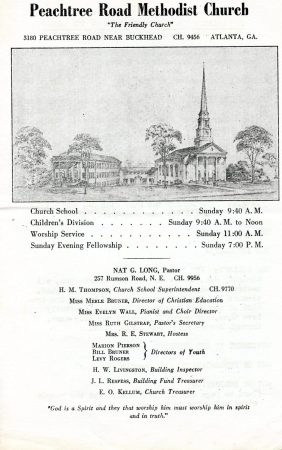
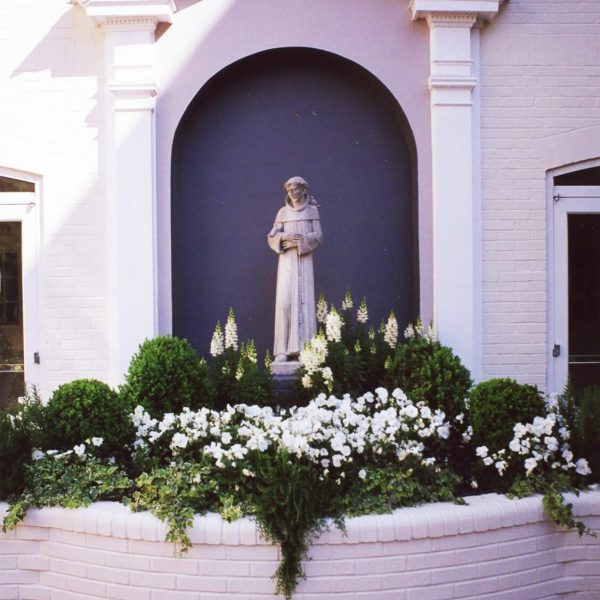
The Great Hall, built in 1942, became a connective cornerstone in the life of the church. Not only did it connect physically to the expanded church in 1949, but it continued to be a place of connection for Sunday School classes, banquets, mid-week suppers and services. Today, if you go into the Martha Whiting Garden, you will see the original arch that has been there since it was constructed, still holding the church together.
The mid-week supper meetings were a highlight. At these church night suppers, everyone would sit at long tables hosted by the Woman’s Society of Christian Service. Mary Stewart, who served from 1950-1975 was the chief hostess with ladies of the church as her volunteers. It was an honor to be asked to help in the kitchen – Vera Sale, Margaret Walkley, Anne Calvert, Vera Patton, Guess Wynn, Peggy Fletcher are just a few names remembered. In addition to the food and fellowship, there was always a speaker, oftentimes from Emory University, who would address the crowd of around 300 people.
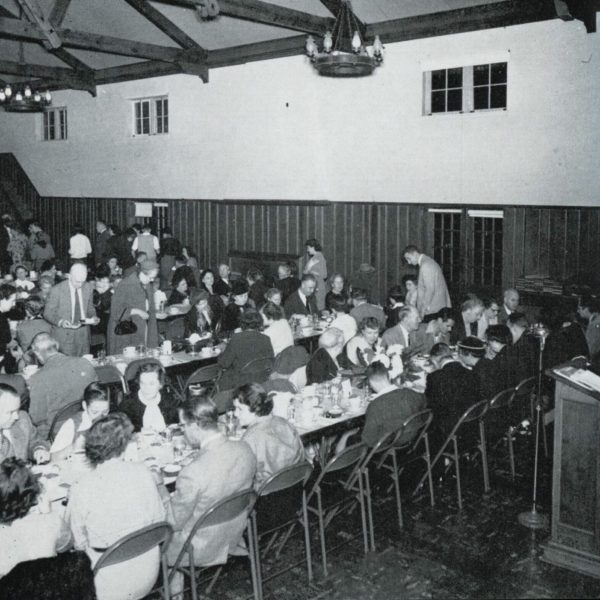
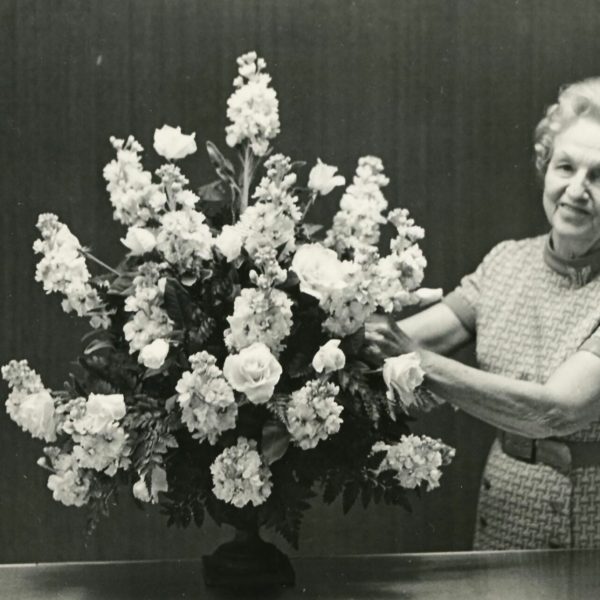
As the church grew to 3000 members, the need for a Director of Christian Education was warranted and Hazel Wade became the first person to take this role. With the support of Dr. Haynes, Ms. Wade coordinated all educational activities for adults, youth, and children.
A major step in outreach was undertaken in June 1952 when Wade proposed the idea of a weekday kindergarten to the Commission on Education. Harold Hill, then chairman of the Administrative Board, said the proposal was one of the most controversial in church history. For some, the idea of opening the church to the community seemed to exceed the bounds of the understood mission of the church. The debate helped the church define itself in terms of its contemporary social setting and set the framework for future expansion of church programs, reaching out to a community beyond worship.
In March 1953 the kindergarten proposal passed, and the school opened in September of that year. Participation was open to members first, then to the community. Parents would pay $20 per month for tuition.
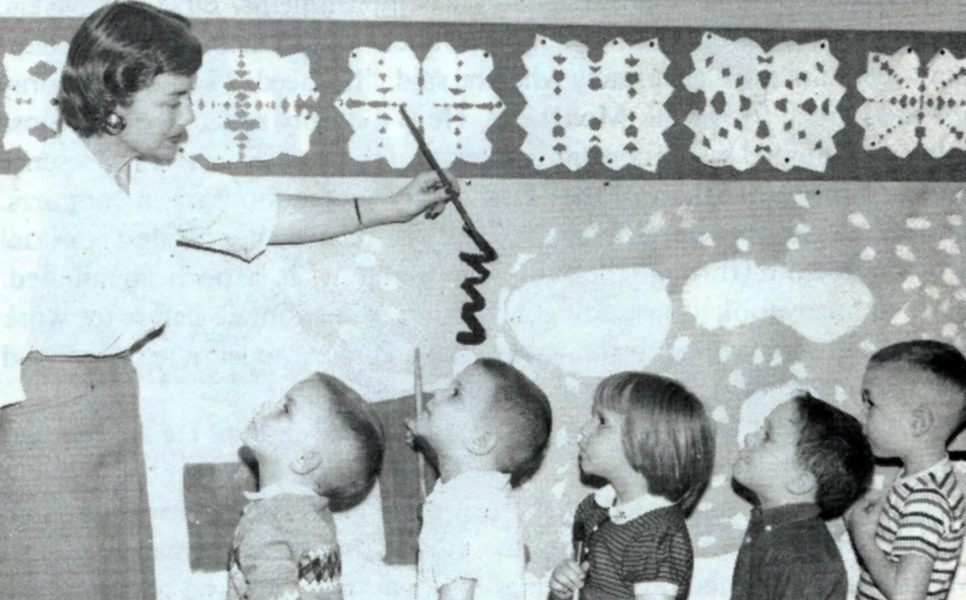
Thirty children would make up the first four-year-old class taught by Mrs. Mabel Cushman and her assistant, Lucy Simson. Mrs. Simson would later become the director, leading the school to grow to nearly 200 children.
The young church celebrated 30 years and Dr. Haynes offered his thoughts at the service on April 24, 1955:
The history of the church is a continuous story of gradual growth. While there have been high days and periods of crisis, there has not been the ebb and flow so often experienced in the growth of an institution. Each of the nine pastors have reported progress. From the early days of few people and fewer resources, the limitations of a small congregation and the Great Depression did not keep the church from its growth and service. These years of faith, love, work, tears, and laughter produced a loyal congregation who were ready to accept the enlarging opportunities before them.
Story “Thirty Years” by Claud M. Haynes
In 1958, Dr. Haynes was assigned to another church. The six years he served were a time of remarkable growth, both in membership and in programming. His leadership led Peachtree Road forward with innovations that responded to the changing of the times.
Jane Hill, longtime church member recalls a precious memory from the years with Dr. Haynes: “Our son, Doug, needed surgery when he was only five weeks old. Surgery was scheduled for 6:30 am and our pastor, Dr. Haynes, showed up at the hospital to pray and sit with our family during the operation. I have never experienced such tender care from a pastor.”
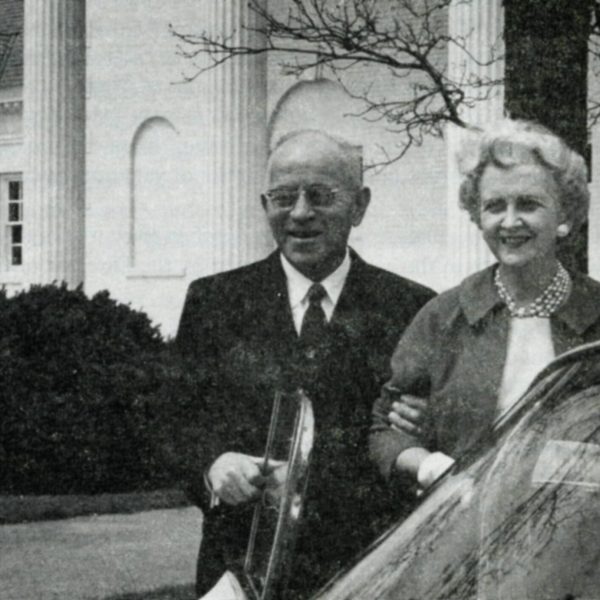
Chaplain Esaias, a respected Bible scholar, came to Peachtree Road as its first associate in 1957 and would be a bridge of transition between pastors. He and his wife, Martha, became endeared to the congregation. One of his greatest joys was to visit mothers with new babies, giving them a one-dollar bill to start the baby a savings account.
Mrs. Esaias was an active part of a lady’s sewing club at the church. While visiting a church in Virginia, she fell in love with beautiful white and gold Chrismons decorating a Christmas tree. After receiving the patterns for the ornaments. the sewing club went to work, making them for Peachtree Road. Mrs. Esaias would later serve as the first president of the Martha Stewart Altar Guild when it was established in 1976.
Dr. Frank Moorhead (1958-1965) was a leader who enriched the spiritual life of the congregation and staff. Esther Summers, receptionist from 1957-1979, recalled her spiritual growth occurring through the daily devotions that the senior pastor initiated. Staff members took turns leading the devotionals before the workday began. Summers said it was an opportunity to “grow in grace.”
Dr. Moorhead was the innovator of the “Children’s Hour” during Sunday Worship. He would call all the children down to the altar, greet them, and talk with them – in a simplified way – about the sermon he would later preach.
As the church grew, it became obvious the church needed more room. Expansion was necessary but had been thwarted due to disagreement among the 185 members of the Administrative Board ( Memoirs by Frank Moorhead, Pg. 29).
One segment of the board felt money should go toward expansion of the church. The other felt the church should spend funds on new churches in the ever-developing north side of Atlanta. Finally, a new spirit began to prevail at the board meetings, and it was agreed that we could give $50,000 annually for new church plants and at the same time expand our own campus.
In 1959, Dr. Moorhead presented a proposal to the church. Entitled “Our Finest Hour” the proposal recommended five components: an educational building, an activity building, a chapel, added parking spaces, and air-conditioning of the educational building and ground floor of the sanctuary. The estimated cost was $762,000. Otis Barge chaired the fifth building committee.
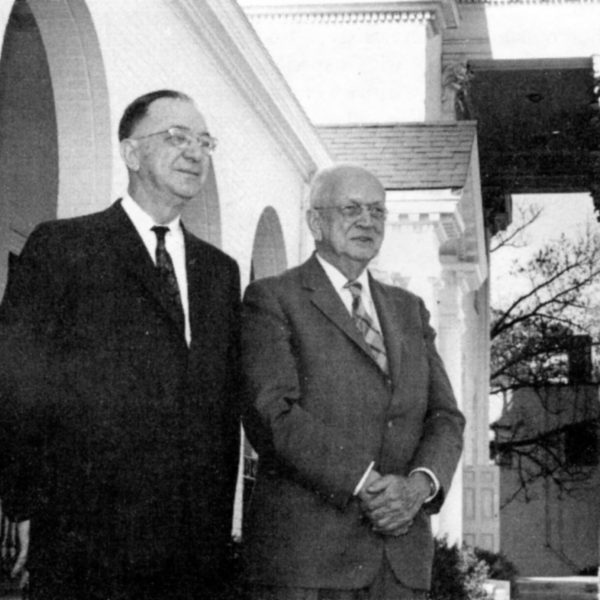
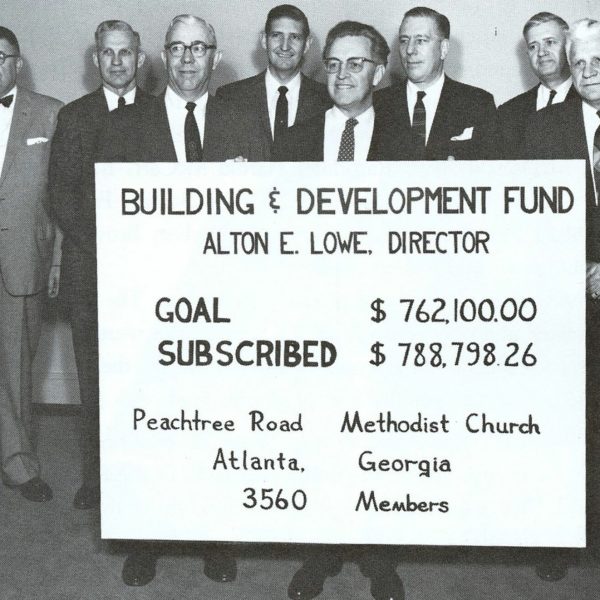
Dr. Frank Moorhead (1958-1965) was a leader who enriched the spiritual life of the congregation and staff. Esther Summers, receptionist from 1957-1979, recalled her spiritual growth occurring through the daily devotions that the senior pastor initiated. Staff members took turns leading the devotionals before the workday began. Summers said it was an opportunity to “grow in grace.”
Dr. Moorhead was the innovator of the “Children’s Hour” during Sunday Worship. He would call all the children down to the altar, greet them, and talk with them – in a simplified way – about the sermon he would later preach.
At the dedication and opening of the new buildings on April 23, 1961, Dr. Moorhead’s sermon title was “The House of the Lord”. He said, “Ours is a rich and proud heritage. Throughout the tapestry of service to our community shines the silver thread of a faith that goes forward to meet the challenge of growth. Only a growing church is a living church.”
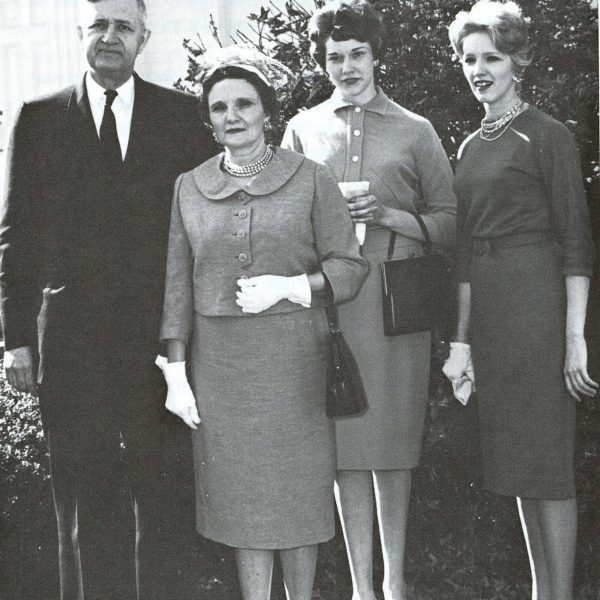
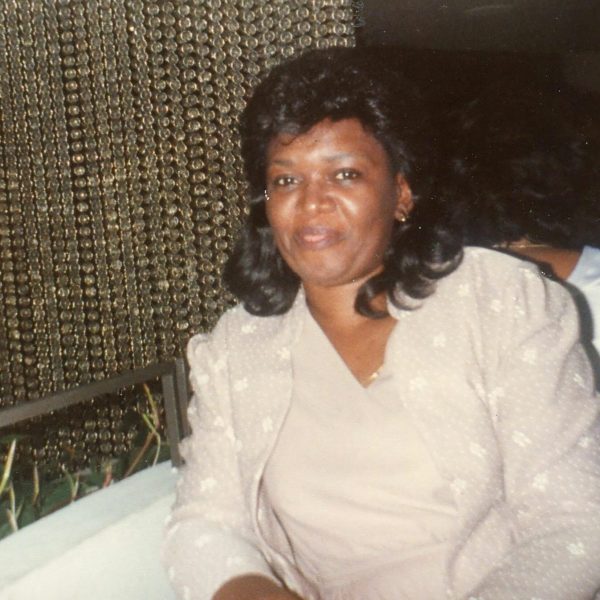
And it was a growing church. By 1965, church membership had grown to 4200. More help was needed with the kitchen and dining facilities. Mary Stewart directed Peachtree Road’s food service from 1950 – 1975.
In 1961 she hired Delmar Bethea who served for 28 years, Delmar became a favorite to all who attended week-night suppers.
With the church expansion close to completion, Peachtree Road was poised to nurture its spiritual growth and broaden activities under the leadership of Tom Whiting (1965-1976). It was a time of unrest in our country. The era of the civil rights movement and the Vietnam War challenged the way of thinking– for young and old – causing questioning of long-held beliefs. It was a time when the church could be a very influential part of an individual’s growth, and Peachtree Road responded to the challenge. According to Lois Coogle, author of Tassels, many outstanding leaders, both lay and staff, helped to create dynamic programs that reached out to every age and interest group in the congregation.
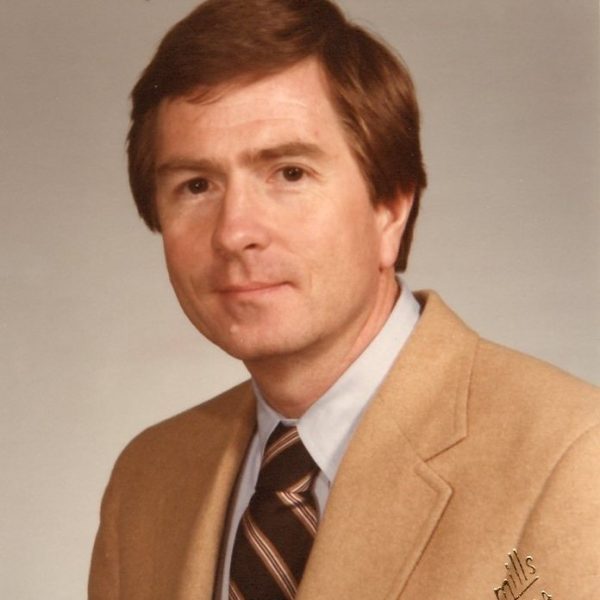
MUSIC
From our beginning music has always been a vibrant part of worship, starting with pianist/choir director Leona Wood. When our beloved Peggy Hughes died of cancer in 1965, John Dressler came to be Minister of Music and would remain until 1978. With the help of Janice White who led the children’s choirs, he established seven choirs in the church, giving everyone who wanted to sing an opportunity and telling all, Make a joyful noise unto the Lord.”
MARTHA WHITING GARDEN
Founded in 1971, the Martha Whiting Memorial Garden was dedicated to the remembrance of Martha Page Whiting, beloved wife of then Senior Pastor Tom Whiting. The small courtyard, surrounded by the church, was designed by well-known horticulturist, Edith Henderson. Over the years, various groups maintained the garden. Today, it welcomes children for play, and comforts those who walk to and from the Counseling Center. It is a quiet respite from the busy day, offering blooms throughout the season.

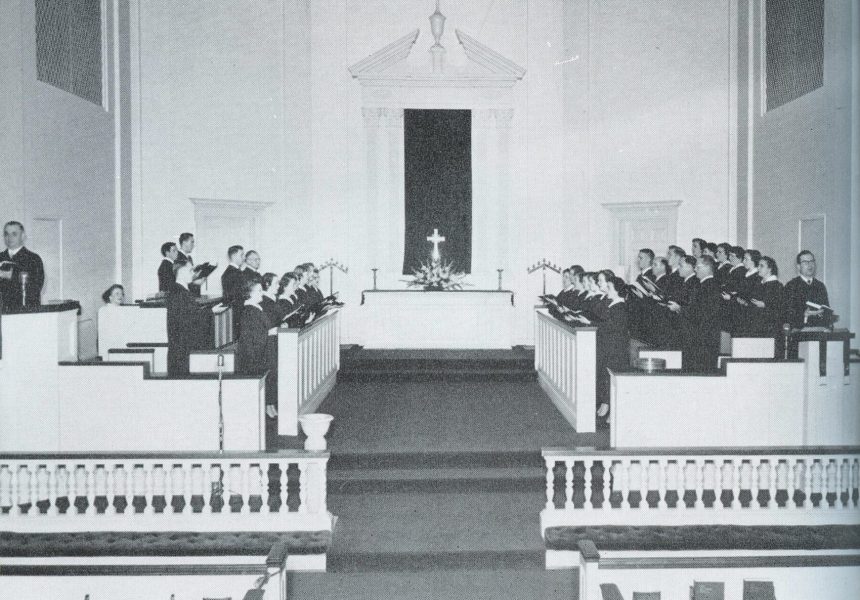
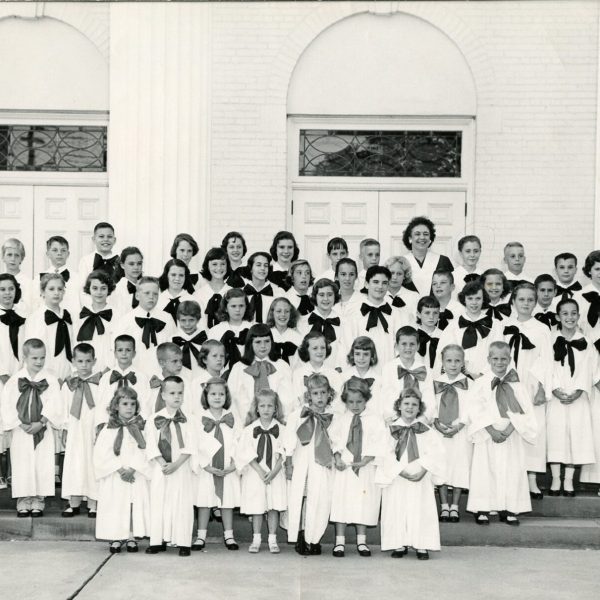
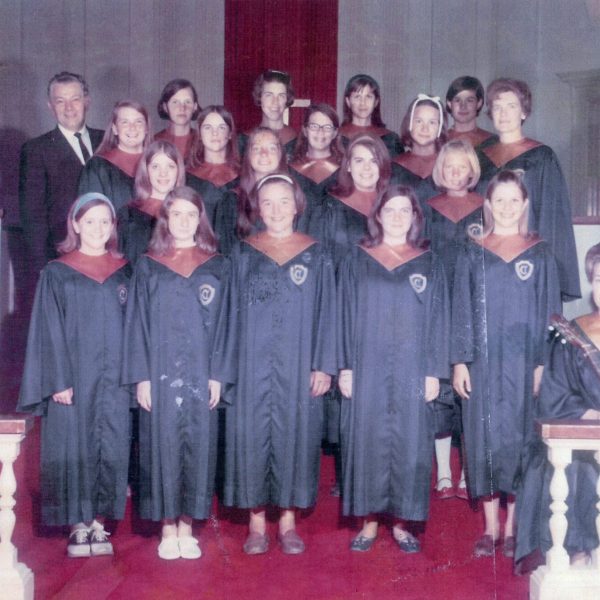
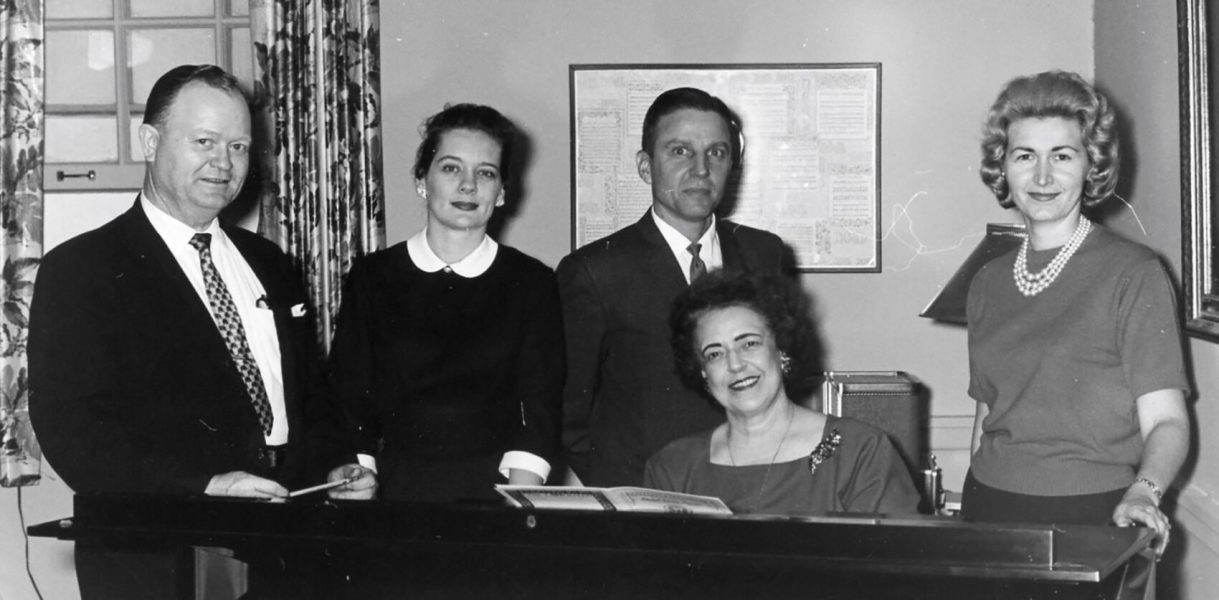
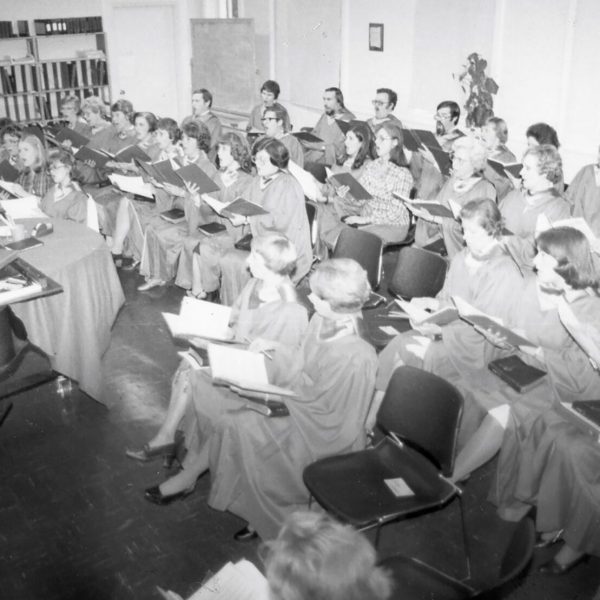
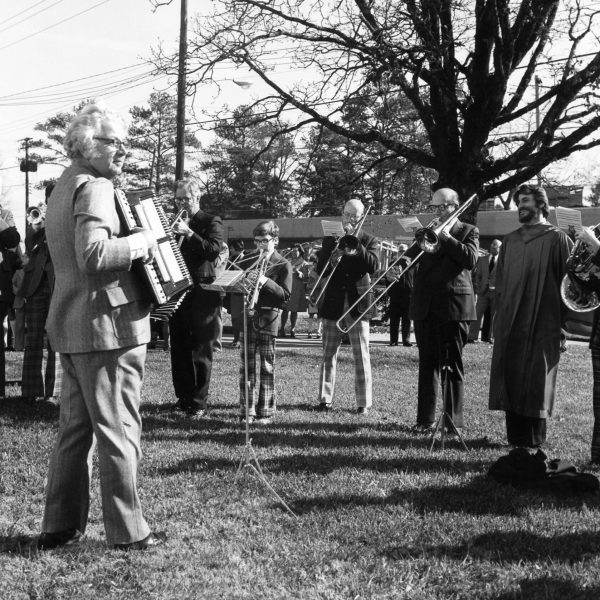

In 1975 at the church’s 50th anniversary, Dr. Tom Whiting wrote a sermon entitled Tassels of Remembrance, Lamps of Hope” based on the scripture from Numbers 15:37-41 which reads, “Any generation that forgets its history might well prove to be unfaithful to the present and the future.
Sharing the history, growth, and ministry of Peachtree Road UMC… one story at a time.

A LEGACY PROJECT OF PEACTHREE ROAD
404.266.2373
[email protected]
prumc.org